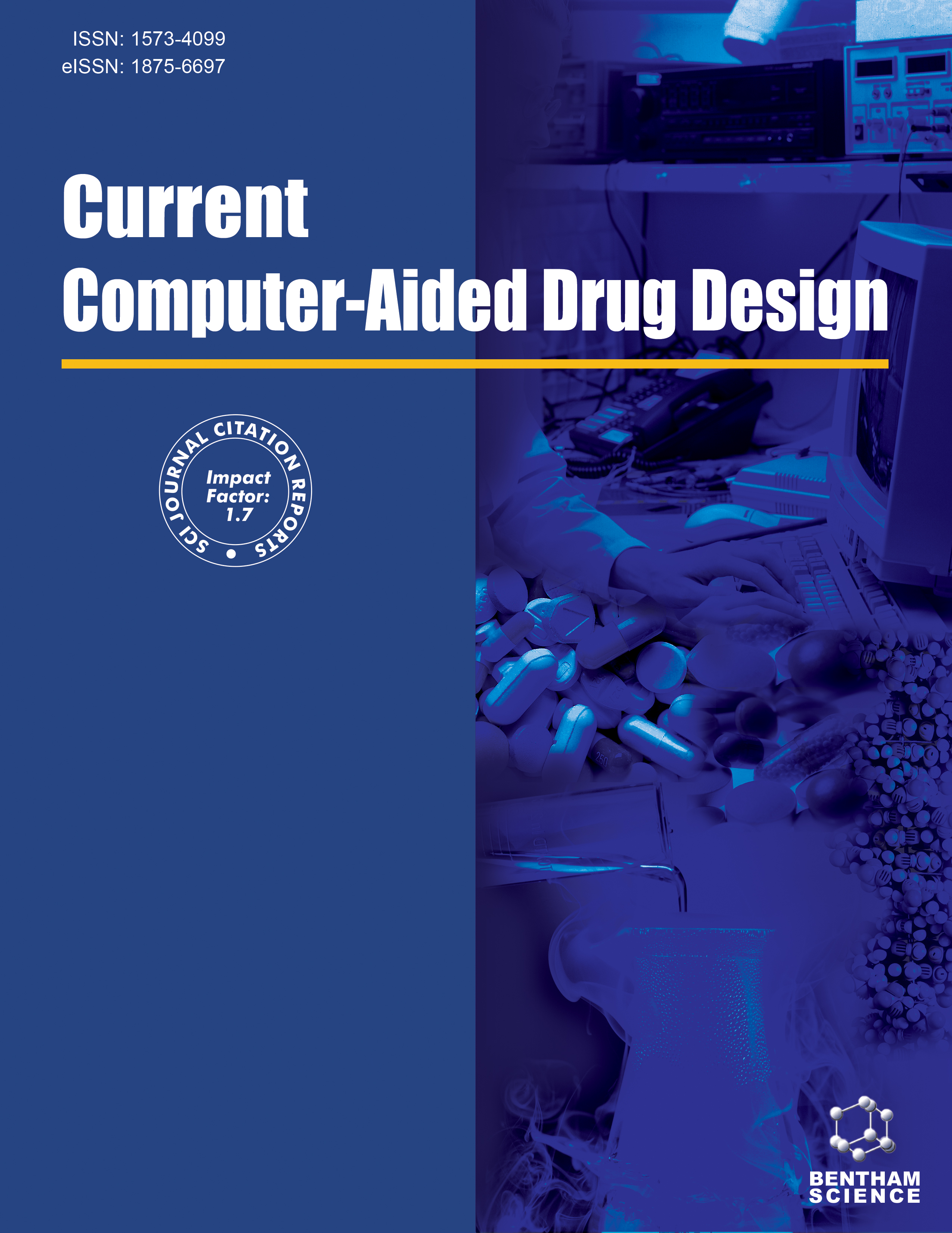- Home
- A-Z Publications
- Current Computer - Aided Drug Design
- Previous Issues
- Volume 11, Issue 2, 2015
Current Computer - Aided Drug Design - Volume 11, Issue 2, 2015
Volume 11, Issue 2, 2015
-
-
Exploring Natural Products from the Biodiversity of Pakistan for Computational Drug Discovery Studies: Collection, Optimization, Design and Development of A Chemical Database (ChemDP)
More LessAuthors: Shaher Bano Mirza, Habib Bokhari and Muhammad Qaiser FatmiPakistan possesses a rich and vast source of natural products (NPs). Some of these secondary metabolites have been identified as potent therapeutic agents. However, the medicinal usage of most of these compounds has not yet been fully explored. The discoveries for new scaffolds of NPs as inhibitors of certain enzymes or receptors using advanced computational drug discovery approaches are also limited due to th Read More
-
-
-
Prognosis of Possible Reassortments in Recent H5N2 Epidemic Influenza in USA: Implications for Computer-Assisted Surveillance As Well As Drug/Vaccine Design
More LessAuthors: Ashesh Nandy and Subhash C. BasakThe recent H5N2 flu epidemic in US Midwest has led to deaths of millions of turkeys and farm bred poultry. While no human infections are reported to date, the rapid mutations in flu viruses can lead to more pathogenic subtypes. We have investigated such possibilities and have shown that H5N4, H5N9 and H5N6 are the most likely candidates for next round of viral reassortments, amongst which H5N9, if reassorted from Asi Read More
-
-
-
Prediction of Mutagenicity of Chemicals from Their Calculated Molecular Descriptors: A Case Study with Structurally Homogeneous versus Diverse Datasets
More LessAuthors: Subhash C. Basak and Subhabrata MajumdarVariation in high-dimensional data is often caused by a few latent factors, and hence dimension reduction or variable selection techniques are often useful in gathering useful information from the data. In this paper we consider two such recent methods: Interrelated two-way clustering and envelope models. We couple these methods with traditional statistical procedures like ridge regression and linear discriminant analysis, Read More
-
-
-
Insight into the Binding of DFG-out Allosteric Inhibitors to B-Raf Kinase Using Molecular Dynamics and Free Energy Calculations
More LessB-Raf mutations are identified in 40-50% of patients with melanoma and among them, the substitution of valine for glutamic acid at position 600 (V600EB-Raf) is the most frequent. Treatment of these patients with B-Raf inhibitors has been associated with a clear clinical benefit. Unfortunately, multiple resistance mechanisms have been identified and new potent and selective inhibitors are currently needed. In this work, five diff Read More
-
-
-
Molecular Docking Reveals Binding Features of Estrogen Receptor Beta Selective Ligands
More LessAuthors: Pawel Ksiazek and Krzysztof BrylEstrogen receptors exist as two subtypes ERα and ERβ, which are characterized by various distributions in human tissues and diverse transcription regulation. Ligands capable of selective ERβ activation show positive effects in treatment of such diseases as certain cancers, endometriosis, inflammatory diseases, and assist in maintaining cardiovascular and nervous system health. Thus far, there are no pharmaceutical drug Read More
-
-
-
A Structure Guided QSAR: A Rapid and Accurate technique to predict IC50: A Case Study
More LessAuthors: Rama K. Mishra and Jasbir SinghIn this study, the role of highly structured water molecules present in the active site of the leukotriene A4 hydrolase (LTA4H) enzyme has been critically examined through the docking experiments. It was observed that different experiments were necessary to perform the docking studies. The ligands capable of displacing or interacting with bound-water(s) displayed different binding poses as well as the scores. The docking Read More
-
-
-
3D-QSAR Selectivity Analysis of 1-Adamantyl-3-Heteroaryl Urea Analogs as Potent Inhibitors of Mycobacterium tuberculosis
More LessAuthors: Preeti Wadhwa, Sourav Bagchi and Anuj SharmaA 3D-QSAR selectivity analysis of 53 adamantyl heteroaryl urea derivatives active against M. tuberculosis is reported. These analogs inhibit Mycobacterial Membrane Protein Large 3 (MmpL3), a proposed transporter for cell wall mycolic acids. However, these analogs also exhibit affinity towards human soluble epoxide hydrolase (sEH) enzyme, making them pharmacologically undesirable. Thus, COMFA and CoMSIA selecti Read More
-
-
-
QSAR of Chalcones Utilizing Theoretical Molecular Descriptors
More LessAuthors: Sisir Nandi and Manish C. BagchiThe paper is an attempt for QSAR modeling based on topological, electrostatic, quantum chemical, constitutional, geometrical and physicochemical indices computed from the structures of 59 set of synthesized chalcone derivatives tested for the cell cycle inhibition of mitotic G2/M phase using multiple linear regression method. Impact of such computed structural descriptors towards antimitotic and antiproliferative activities wa Read More
-
Volumes & issues
-
Volume 21 (2025)
-
Volume 20 (2024)
-
Volume 19 (2023)
-
Volume 18 (2022)
-
Volume 17 (2021)
-
Volume 16 (2020)
-
Volume 15 (2019)
-
Volume 14 (2018)
-
Volume 13 (2017)
-
Volume 12 (2016)
-
Volume 11 (2015)
-
Volume 10 (2014)
-
Volume 9 (2013)
-
Volume 8 (2012)
-
Volume 7 (2011)
-
Volume 6 (2010)
-
Volume 5 (2009)
-
Volume 4 (2008)
-
Volume 3 (2007)
-
Volume 2 (2006)
-
Volume 1 (2005)
Most Read This Month
Article
content/journals/cad
Journal
10
5
false
en


